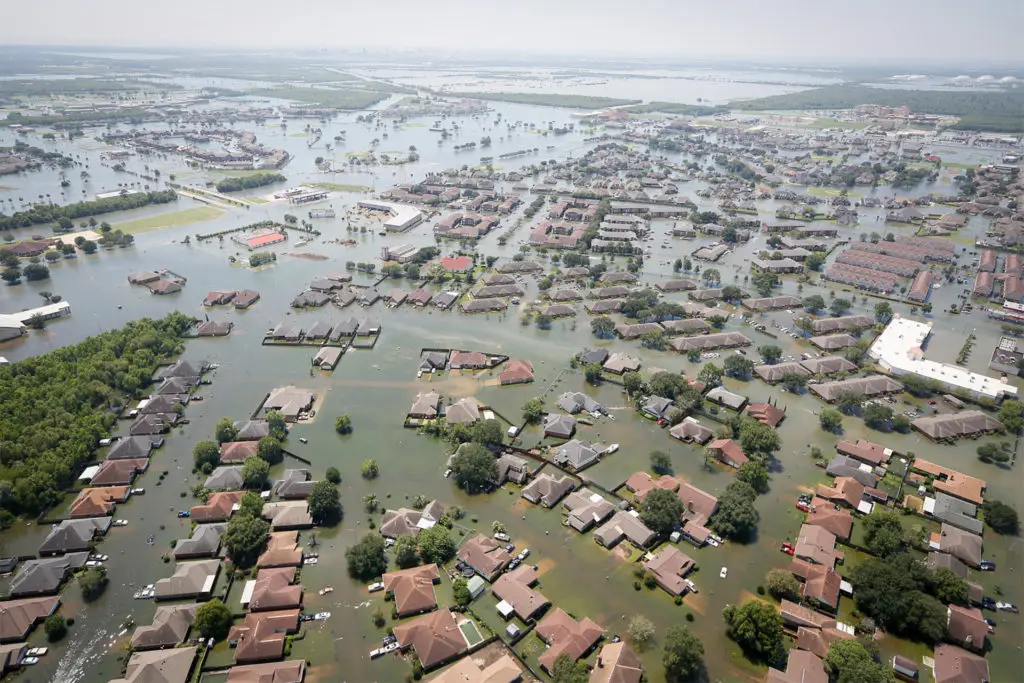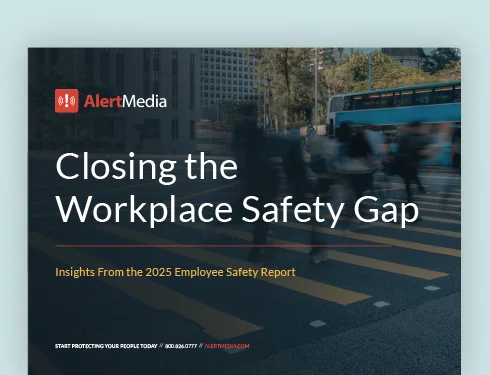
3 Post-Hurricane Safety Precautions for Facility Managers
Facilities managers are usually the first to return after a hurricane. This article details 3 post-hurricane safety precautions they should keep in mind.

When a hurricane strikes and everyone else is moving to higher ground, facilities managers are headed the other way—planning when they can return and assess the damage. Once the storm moves offshore or loses steam, they will likely be the first ones back to the office. No matter how well you’ve prepared your business for a hurricane, things will be chaotic. If you’re a facility manager, you need to be taking the correct post-hurricane safety precautions to ensure the property is ready for a safe re-entry so everyone can get back to work.
According to the American Meteorological Society, the U.S. faces more extreme weather events than any other country on the planet. The Weather Company predicts an above-average 2019 hurricane season–with 14 Atlantic named storms. That’s a lot of wind, water, and debris possibly headed straight to your facilities.
Here are the post-hurricane safety precautions you’ll want to include in your hurricane preparedness and response checklist as you inspect your buildings and what it takes to give the “all clear.”
Step One: The Physical Assessment
Most likely, you’ve been in touch with the local emergency management authorities to understand the scope of what you’ll face upon returning. You’ve also probably talked with nearby neighbors. If you have services or resources they might find valuable, let them know–we’re all in this together, so be a good neighbor for those who might need help.
As you approach the office or warehouse space, be aware of storm debris and vegetation. Never drive through flood water as it could hide debris. If water comes into contact with your skin, wash it immediately with soap and water.
Once inside your complex, note the debris that might have accumulated. Be on the lookout for downed power lines or trees, standing water, and damage to retaining walls or fencing. Never enter flood waters or flood-damaged buildings before first disconnecting all electrical power to the building. The International Code Council recommends having the electrical meter at the service equipment removed to ensure a reliable means of disconnecting the power. Be aware that there may be more than one electrical service to the building.
Inspect your building structure, making extensive notes and taking pictures of any damage for insurance providers. Depending on your role at the company, report the losses to the appropriate colleague or the insurance agent. Consider what resources vendors or technicians will need to do the necessary repair work. Begin the scheduling process for repairs as soon as possible, as vendors will likely be swamped with requests.
Step Two: Practical Concerns
It’s best to assume that bacteria-laden waters have contaminated the building’s water system. Depending on the damage, you may need to repair or replace pipes before you open the building’s main water shutoff valve.
Prepare for power outages. If you’re using a generator, make sure to operate it only outside and at a good distance away from windows and doors. Remember that a wet environment in buildings can increase the hazards of electrical shock due to saturated materials and components. Use only extension cords that are rated for wet environments and that are supplied by ground-fault circuit interrupter (GFCI) protected circuits or outlets.
Are you cleaning up the property yourself? If so, the Centers for Disease Control and Prevention recommend equipment such as hard hats, goggles, N95-rated masks, heavy work gloves, waterproof boots, and at least two fire extinguishers. If mold is present, hit the “pause” button on your DIY cleanup efforts and consult a professional disaster cleaning or mold remediation service.
Check refrigerators and other places food is stored and be sure to throw out spoiled or moldy products. Note that most appliances that have been flooded will need to be replaced. Be on the lookout for wildlife such as bugs, rodents, or snakes that may find your shelter appealing if the hurricane disturbed their normal habitat.
Make plans to return any equipment that you removed to higher ground before the storm. This is a good time to check with any critical staff that stayed through the storm to keep operations running. Have they observed any damages or outages that you’ve missed?
Step Three: Over-Communicate
When you’ve developed a plan to address any issues that the hurricane left on your doorstep, the next step is to give everyone an update.
Its important to communicate during all phases of a hurricane. Communicate early and often, giving as much information as possible to those affected.
Leadership. Keep leadership informed of all damage and potential insurance claims. If there are issues that will affect the business’s bottom line, you need to communicate this ASAP. You can utilize AlertMedia’s conference call feature to set daily meetings with leadership. This feature ensures that key executives can join important discussions without having to keep track of dial in numbers. It also makes it easier to ensure you have the right people on the call.
Employees. Keep the entire company informed of the damage and expected timelines for return. The company might resume its normal business hours long before returning to the office, so you should ensure expectations are clear. In addition to standard email, phone, and text notifications, AlertMedia’s event pages are an ideal solution to keep everyone aware of any updates. Event pages enable you to keep everyone informed, by simply updating the page as changes arise. This is ideal for smaller updates that don’t require a mass notification.
Partners. The hurricane will likely affect vendors, suppliers, landlords, service providers, and others. They need to know how the hurricane has impacted your business. Likewise, you need to know how it has affected theirs. Consider going beyond the standard email as you’re dealing with these partners. During a disaster and afterward, people will be very slow to respond to email.
Whatever methods you use to communicate, make sure you over-communicate during this time. Although the storm may have passed, chaos will still reign, and people will easily lose notifications. AlertMedia’s mass communication software allows you to know with certainty that your people got the message.
Other Post-Hurricane Safety Precautions To Consider
When the floodwaters recede, every facilities manager will face a long list of additional concerns regarding post-hurricane safety precautions:
- Remember that electronic locks or access doors may not work.
- Be wary of residential homeowners that may try to connect to your electrical system.
- Watch out for “extension cord-happy” employees who try to rig up their own electrical solutions.
- Check your carbon monoxide detectors (make sure they run on batteries in case the power is out).
- Be alert for gas leaks once the gas company restores your service.
We saw in the devastating 2018 hurricane season that storms can relentlessly affect our lives, safety, work, health, transportation, and business operations. The 2018 season also showed us that even if you are outside of the typical threat zone, hurricanes can impact your business.
Take time to make plans for a hurricane and its messy aftermath. The destruction from these powerful storms demands planning and a smart response. Taking the appropriate post-hurricane safety precautions will help get your business back to 100%, saving you time and money.




